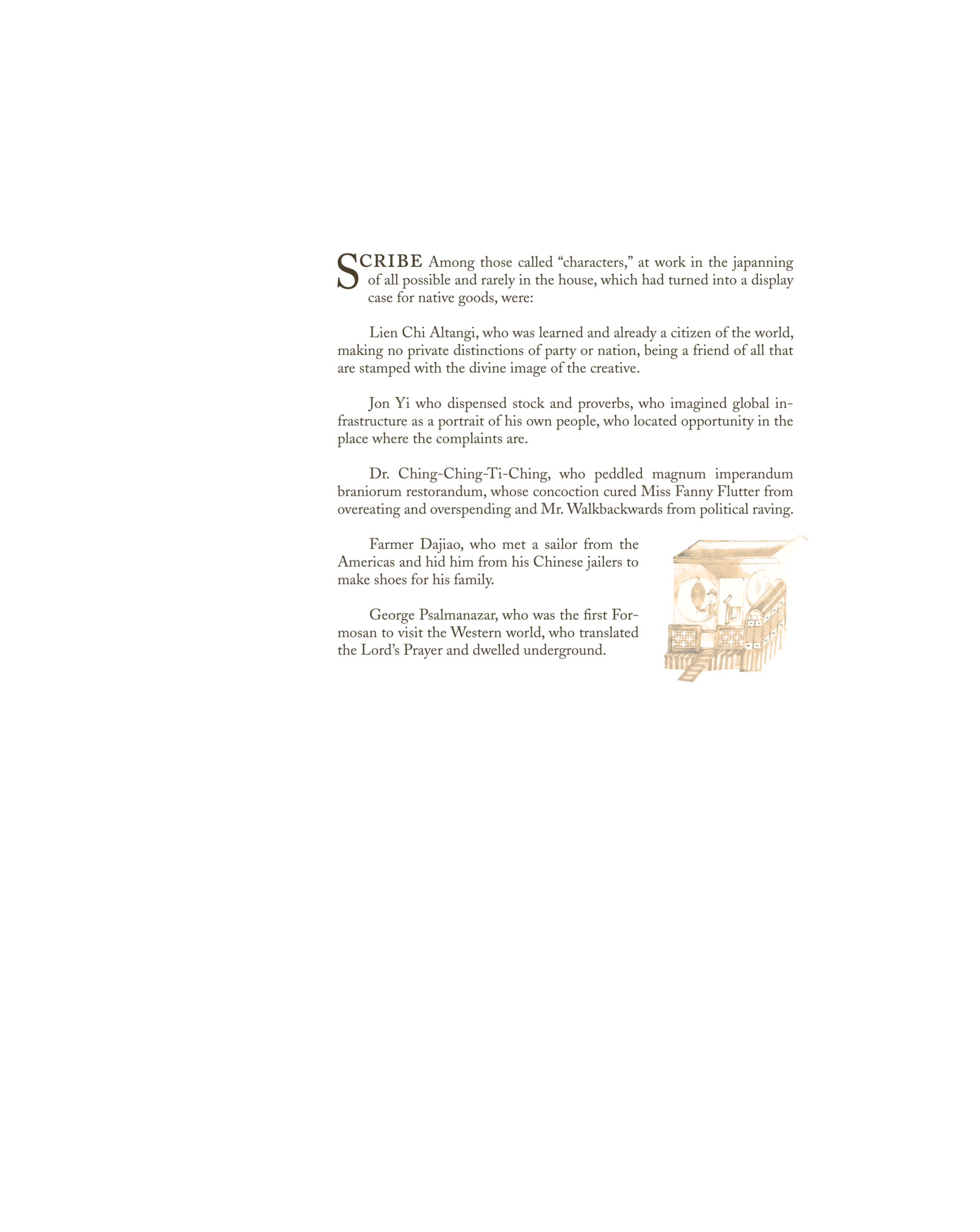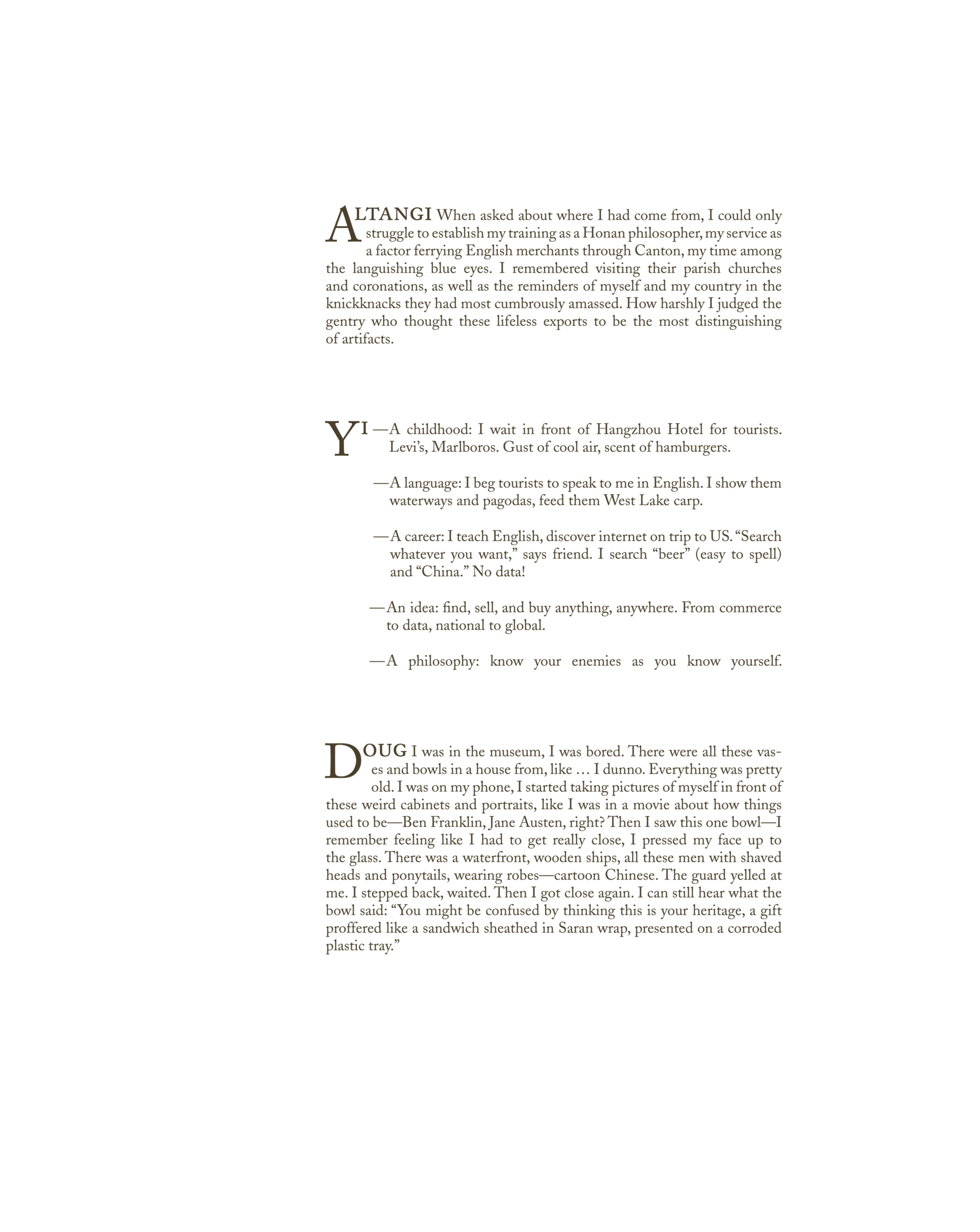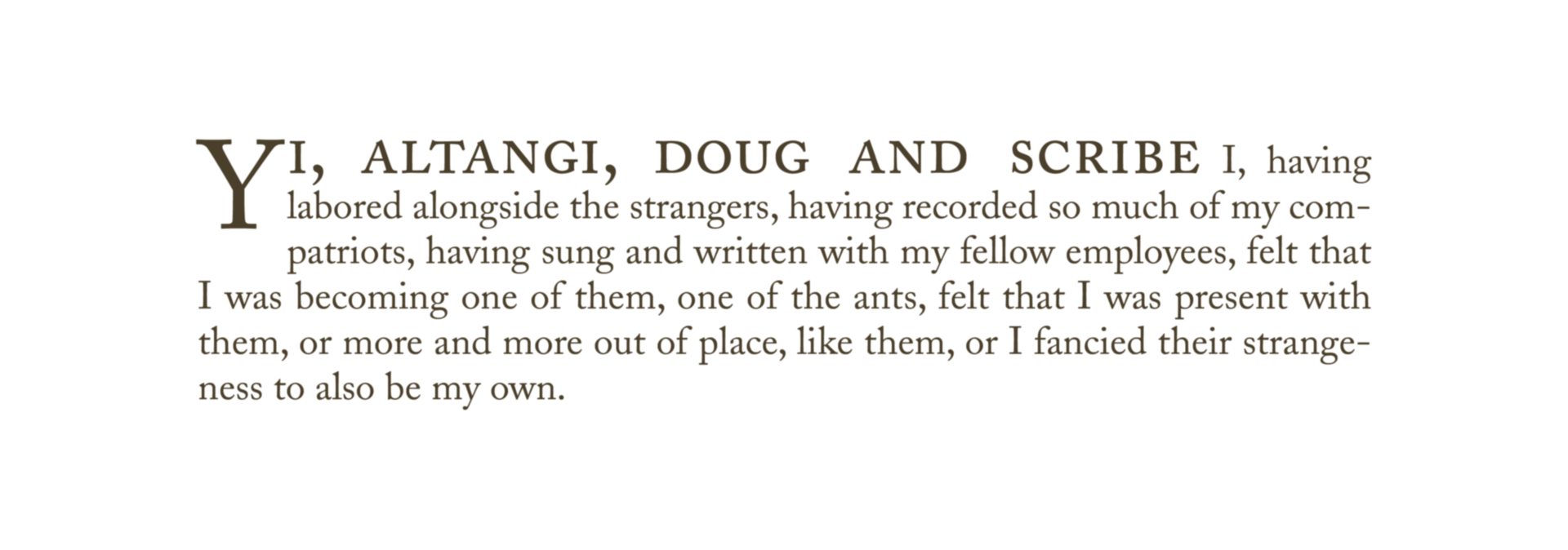For “Raid the Icebox Now,” Triple Canopy created Can I Leave You?, a multimedia installation that responds to the RISD Museum’s Pendleton House, which was built in 1906 to exhibit the bequest (and resemble the nearby home) of the collector Charles Pendleton. This volume revises the lavish catalogue of Pendleton’s collection, published by the museum in 1906 in a limited edition featuring photogravure illustrations. In To Make New Bodies Out of Old Shapes, Triple Canopy focuses on the catalogue’s text, a seemingly anodyne description of styles and techniques. This language, however, is a manifestation of the rhetoric around taste, distinction, and progress, especially in industry and art, that has fueled the formation of American identity and abetted the exercise of American power.
As To Make New Bodies Out of Old Shapes progresses, the original catalogue is increasingly augmented by nationalistic speeches, nostalgic stories, messianic sermons, and other original sources that reflect this underlying agenda. Dutiful assessment of the collection is interrupted by a time traveler who meddles with the rebellion against the British, an enslaved person harvesting mahogany to furnish the homes of New England aristocrats, and a Chinese philosopher disturbed by the patrician penchant for dragons and pagodas.
Eventually, To Make New Bodies Out of Old Shapes gives itself over to these accounts.
The full text of To Make New Bodies Out of Old Shapes can be accessed here.




































































































Works Cited
Robert Blair St. George, Conversing by Signs: Poetics of Implication in Colonial New England Culture (Charlottesville: University of North Carolina Press, 2000).
Joshua Bradley, “A Funeral Sermon on the Death of Paul Mumford who Departed this Life July 20, 1805 in the 72 year of his Age” (Newport: Oliver Farnsworth, 1805).
Tristam Burges, The Spirit of Independence: An Oration, Delivered before the Providence Association of Mechanics and Manufacturers, at their Annual Election, April 14, 1800 (Providence: B. Wheeler, 1800).
Edmund Burke, A Philosophical Enquiry into the Origin of Our Ideas of the Sublime and Beautiful (London: R. and J. Dodsley, 1757).
Anne Bradstreet, “As Weary Pilgrim, Now at Rest,” in The Works of Anne Bradstreet in Prose and Verse, ed. John Harvard Ellis (Boston: A. E. Cutter, 1867).
Eliza Cook, “The Old Armchair,” 1838, in The Poetical Works (Philadelphia: Willis P. Hazard, 1856).
Samuel Cooper to Thomas Pownall, October 12, 1770, in “Letters of Samuel Cooper to Thomas Pownall, 1769–77,” ed. Frederick Tuckerman, American Historical Review, vol. 8 no. 2 (January 1903).
Charles Over Cornelius, Richard Townley Haines Halsey, and Joseph Downs, A Handbook of the American Wing (New York City: Metropolitan Museum of Art, 1938).
Emmanuel Downing to John Winthrop, October 14, 1638, Papers of the Winthrop Family, Volume 4, Massachusetts Historical Society.
Charles L. Eastlake, Hints on Household Taste: The Classic Handbook of Victorian Interior Decoration (London: Longmans, Green, and Company, 1868).
Jared Eliot, Essays upon Field-Husbandry in New-England, as it is or may be ordered (Boston: Edes and Gill, 1760).
Olaudah Equiano, The Interesting Narrative of the Life of Olaudah Equiano, or Gustavus Vassa, the African (London: published by the author, 1789).
Caroline Frank, Objectifying China, Imagining America: Chinese Commodities in Early America (Chicago: University of Chicago Press, 2011).
Eben Gay, A Chippendale Romance (New York City: Longmans, Green, and Company, 1915).
Charles Gildon, The Post-Boy Rob’d of His Mail (London: John Dunton, 1692).
Oliver Goldsmith, The Citizen of the World; or Letters from a Chinese philosopher, Residing in London, to His Friends in the East (London: J. Newberry, 1762).
Jonas Hanway, An Essay on Tea: Considered as Pernicious to Health, Obstructing Industry, and Impoverishing the Nation (London: H. Woodfall, 1756).
Nathaniel Hawthorne, The Whole History of Grandfather’s Chair: Or, True Stories from New England History, 1620–1803 (Houghton Mifflin, 1896).
William Hubbard, 1643. Quoted in William Dana Orcutt, Good Old Dorchester: A Narrative of the Town, 1630–1893 (Cambridge, Mass.: John Wilson and Sons, 1893).
Thomas Hutchinson, The Correspondence of Thomas Hutchinson, ed. John W. Tyler and Elizabeth Dubrulle (Boston: Colonial Society of Massachusetts, 2014).
“Inside China’s Ghost Cities” (documentary), 60 Minutes Australia, March 4, 2013.
R. James, English Dispensary, 1752.
Henry Wadsworth Longfellow, “The Old Clock on the Stairs,” in The Complete Poetical Works of Henry Wadsworth Longfellow (New York: Grosset and Dunlap, 1891).
Making History (television show), season 1 episode 1, April 5, 2017.
Margaretta M. Lovell, Art in a Season of Revolution: Painters, and Artisans, and Patrons in Early America (Philadelphia: University of Pennsylvania Press, 2007).
Anonymous, “A Lady’s Adieu to Her Tea-Table,” the Pennsylvania Gazette, February 2, 1774, in William McCarty, comp., The American National Song Book, 1842.
Peter Navarro, dir., Death by China (documentary), 2012.
John Norden, The Surveyor’s Dialogue (London, 1616).
Edward Taylor, “Preparatory Meditations before My Approach to the Lords Supper, 1682 to 1725,” in The Poems of Edward Taylor, ed. Donald Stanford (New Haven: Yale University Press, 1960).
Charles Thomson, “Preface,” Minute Book, American Philosophical Society, Transactions (January 1, 1768).
Jeffrey Trask, Things American: Art Museums and Civic Culture in the Progressive Era (Philadelphia: University of Pennsylvania Press, 2011).
Derek Walcott, “The Sea Is History,” in Selected Poems (New York: Farrar, Straus and Giroux, 2007).
John Winthrop, “A Modell of Christian Charity,” in Winthrop Papers, vol. 2, 1623–1630 (New York: Russell and Russell, 1968).
Unknown author, “The Rage for the Antique, or Modern Parlor Decorations,” Providence Journal, June 18, 1845. Found in Christopher P. Monkhouse, Thomas S. Michie, John M. Carpenter, American Furniture in Pendleton House (Providence, Ri.: Rhode Island School of Design Museum of Art, 1986).
Cite this article as
Chicago Style
MLA Style
Shareable Link
Copy this page's URL to your clipboard.
This chapter accompanies the exhibition Raid the Icebox Now with Triple Canopy: Can I Leave You?, on view at the RISD Museum November 22, 2019–October 25, 2020. Concept and direction by Alexander Provan, Matthew Shen Goodman, and C. Spencer Yeh, with Hannah Whitaker and Meredith Morran; revision of The Pendleton Collection by Alexander Provan; script by Matthew Shen Goodman and Alexander Provan; video editing by Meredith Morran with C. Spencer Yeh; videography by Jess Y Lee with Carolyn Gennari and Erik Gould.
Publication Project Lead by Jeremy Radtke. Creative direction by Carolyn Gennari. Design by Brendan Campbell. Animation sequences by Kit Son Lee. Curatorial Support by Sarah Ganz Blythe. Additional production support by Carson Evans, Kit Son Lee, Arielle Eisen, Alex Hanesworth, and Jeremy Radtke. Special Thanks to RISD Archives and Andrew Martinez and Douglas Doe.
Photographs used in plate illustrations courtesy of The Pendleton Collection by RISD Museum, copyright 1904 by Luke Vincent Lockwood.
Glass Plate Negatives courtesy of RISD Archives
